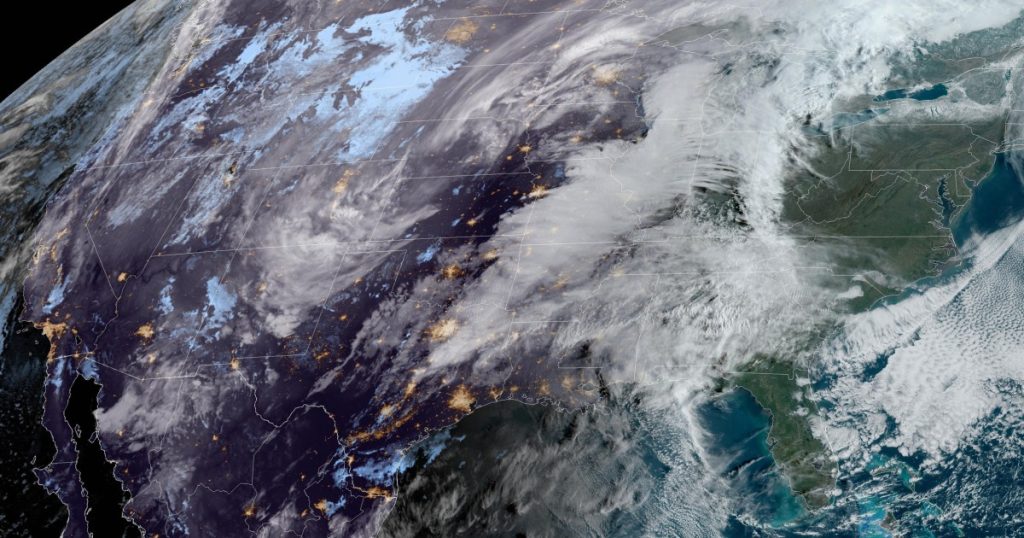A powerful storm brought heavy winds, snow, and rain to the central United States, causing hazardous travel conditions in some areas. The National Weather Service warned of sleet and freezing rain in the Northern and Central Plains, with Minnesota experiencing snowfall of 6 to 12 inches an hour leading to travel chaos in the Twin Cities. The storm resulted in a fatal accident in Burnsville, Minnesota, where a 51-year-old woman died after her vehicle ran off the road and struck a tree. The state patrol reported 328 crashes and 13 injuries due to the extreme weather conditions.
More than 20 million people across the continental United States were under weather warnings on Sunday, from the West Coast to Michigan’s Upper Peninsula. California was hit by a spring storm, with hailstones the size of quarters and winds reaching 60 mph. Lake Tahoe received about a foot of snow, benefitting ski resorts, although some were forced to close ski lifts due to high winds. In Los Angeles, a dramatic rescue took place as the Fire Department saved a woman from the fast-moving and swollen Los Angeles River. The woman was taken to a hospital with minor injuries and hypothermia.
Overnight, the Northeast experienced icy conditions resulting in hundreds of traffic accidents reported to police. The tri-state area was hit by a powerful weather system over the weekend, with more than 2 feet of snow in some parts. Vermont received up to 30 inches of snow, leaving more than 100,000 customers without power in Maine, 22,000 in New Hampshire, and 12,000 in New York. The storm also affected California, where hail and strong winds were reported, leading to travel disruptions and dangerous conditions for residents.
The storm system caused widespread disruptions on both coasts of the United States, affecting millions of people. The Midwest was particularly hard hit, with blizzard-like conditions leading to numerous crashes and injuries. California experienced extreme weather, with hail and strong winds impacting travel and outdoor activities. The East Coast also faced difficulties, with icy conditions causing traffic accidents and power outages across several states. Rescue operations were carried out in Los Angeles, highlighting the dangerous situations created by the storm.
Emergency services were on high alert as they responded to incidents caused by the storm, working to keep residents safe and secure. The impact of the extreme weather was felt far and wide, as millions of people braced for the effects of the storm. Travel disruptions were widespread, with roads and highways affected by snow, ice, and high winds. The storm brought a mix of snow, rain, and freezing temperatures to many parts of the country, creating treacherous conditions for travelers and residents alike. The rapid weather changes required quick response and coordination from emergency services to ensure the safety of those affected by the storm.
As the storm continued to batter the central United States and move towards the East Coast, residents were advised to stay indoors and avoid unnecessary travel. The severity of the weather conditions prompted warnings from meteorologists and government agencies, urging people to take precautions and stay informed. The storm’s impact on infrastructure, transportation, and power systems highlighted the importance of preparedness and resilience in the face of extreme weather events. The efforts of emergency services, rescue teams, and first responders were crucial in mitigating the effects of the storm and keeping communities safe during this challenging time.


